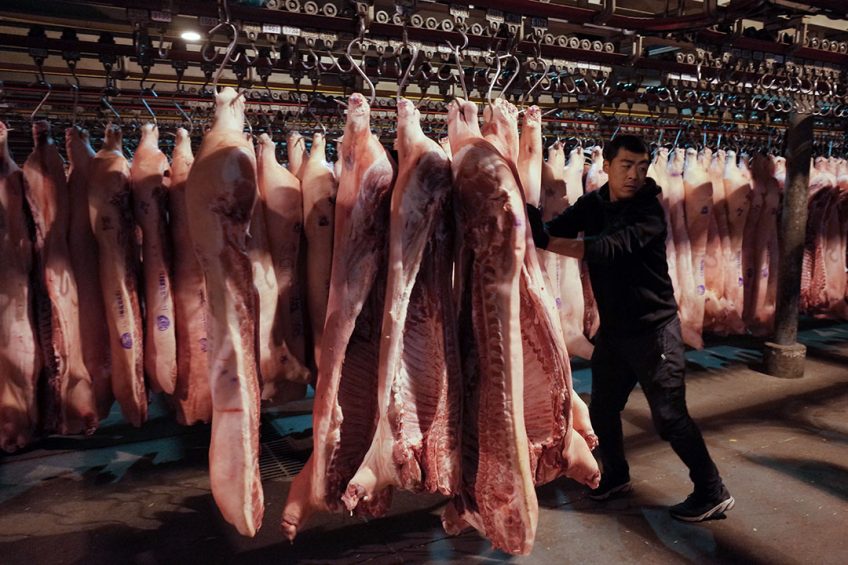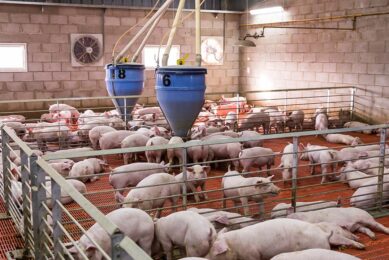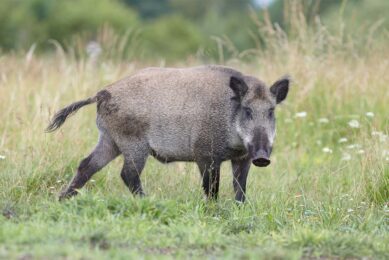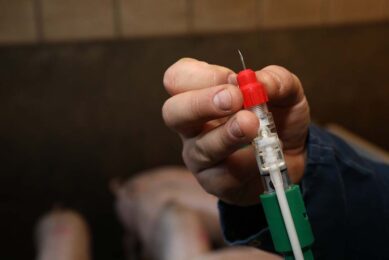ASF China: Government anticipates for Lunar New Year

As Chinese New Year is around the corner (January 25), the country faces many challenges with African Swine Fever being far from under control.
Like every year, millions of Chinese will travel to their home town, creating a lot of additional movement of people and potentially infected pigmeat as well. On top that, during Lunar New Year, demand to pork is , traditionally, very high. A situation that is complex given that the domestic pig inventory is much lower than normal due to African Swine Fever.
The situation is also worrying the Chinese government, as many try to profit from high prices. News agency Bloomberg quoted vice agriculture minister Yu Kangzhen, who said China’s sow herd rose 2.2% in December in comparison to November, adding that the number of pigs sent for slaughter rose by 14.1% in comparison to one month earlier.
Yu called the ASF situation in China ’still severe and complex’. He added: “The risk of outbreaks will rise with the rapid increase in the number of live pigs.” As winter and spring are the high season for pig diseases, he said: “The risk of spreading the virus will rise greatly.”
Releasing the pressure on the pork market
Late December 2019, retail pork prices in China were at almost RMB51 (€ 6.62) – this was twice the amount of December 2018. To ease the pressure on the market, the Chinese authorities are releasing more frozen pork from their reserves, Reuters reported.
Read more about African Swine Fever in our special ASF dossier
One other way to somewhat meet the Chinese need for pork is by importing more from the USA. News agency Reuters reported that US pork exports rose to record levels late 2019. China has increased pork imports to record levels after ASF devastated the herd. US pork exports to China and Hong Kong were up 49% in value at $ 1.18 billion from January to November 2019. The shipments were above full-year 2018 exports of $ 852.5 million and topped a prior full-year record of $ 1.08 billion in 2017.
Pork shortage expected to continue
Nevertheless, China’s pork shortage is expected to continue into 2020, a recent analysis by the German Union for Pig Producers (ISN). In a newsletter, the ISN writes that China will import 10 million tonnes of pork in 2020. That will mean that there will still be a deficit of roughly 12 million tonnes.
Prior to the crisis, annually China produced 54 million tonnes of pork. It is expected that this year, the amount will be 35 million.
Pork producers move to poultry
Where some Chinese pork producers can’t wait to get back into business, another group of farmers have taken flight to start producing poultry instead. That, however, hasn’t proven to be an enormous success. The South China Morning Post reported that, while government data showed the retail price for chicken increased by 23% between June and November 2019, and the price of eggs rose by 29% over the same period, increased production from new farmers has driven producer prices to rock bottom.
ASF in South Korea and Russia
In 2020, so far only Russia and South Korea officially reported new ASF outbreaks in Asia to the World Organization for Animal Health (OIE). South Korea reported 14 outbreaks in the far north in wild boar, all in the vicinity of the border with North Korea. That included the easternmost finding so far, at 67km as the crow flies from the Sea of Japan.
Russia reported 1 case in Yevreyskaya autonomous region. This was an outbreak, however, that already was discovered in November 2019, but only got reported now.
ASF in the Philippines
The Philippine authorities recorded a new case on a backyard farm in barangay Linoc in Pangasinan province on January 10, according to the Philippine News Agency. In total 34 pigs had tested positive. This outbreak was communicated nationally, but has not been reported yet by the OIE.

Read more on pig health in the Pig Progress Health Tool
In the bigger picture, the occurrence of ASF outbreaks in the Philippines would be ‘tapering down’, according to the country’s agriculture secretary William Dar in December 2019. Dar said the Department of Agriculture managed the outbreaks through elevated quarantine measures, as well as through enhanced interagency and interdepartmental collaboration.
Extra defence against ASF for Australia
In Australia, for instance, the authorities have announced an investment of AUD$ 66million to increase airport detection in Melbourne and Sydney, news outlet ABC described. It will include extra personnel, detection strategies like 3D X-ray machines and sniffer dogs. From time to time, the airport authorities discover items with biosecurity concerns.

In the 1970s and 1980s African Swine Fever managed to reach the Americas. In this historical overview is explained how and why.
 Beheer
Beheer








 WP Admin
WP Admin  Bewerk bericht
Bewerk bericht